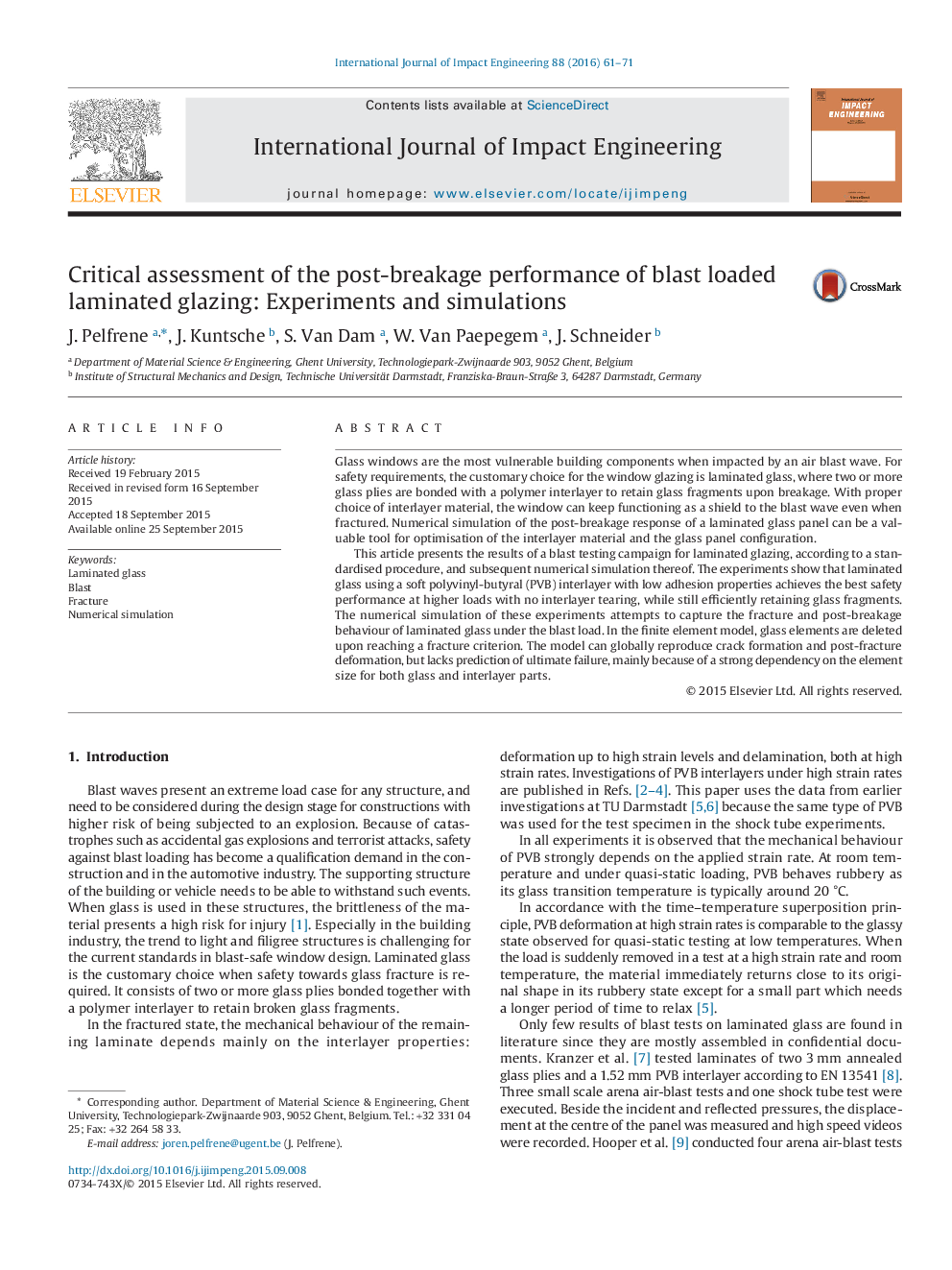| کد مقاله | کد نشریه | سال انتشار | مقاله انگلیسی | نسخه تمام متن |
|---|---|---|---|---|
| 779124 | 1464063 | 2016 | 11 صفحه PDF | دانلود رایگان |
• Laminated glass can provide safety towards blast loading even when fractured.
• The influence of interlayer properties is investigated by a blast testing campaign.
• Results show that safety is improved by reduced interlayer stiffness and adhesion.
• Numerical simulations can globally reproduce crack formation and deformation.
• Element size dependency limits the prediction of ultimate failure of the interlayer.
Glass windows are the most vulnerable building components when impacted by an air blast wave. For safety requirements, the customary choice for the window glazing is laminated glass, where two or more glass plies are bonded with a polymer interlayer to retain glass fragments upon breakage. With proper choice of interlayer material, the window can keep functioning as a shield to the blast wave even when fractured. Numerical simulation of the post-breakage response of a laminated glass panel can be a valuable tool for optimisation of the interlayer material and the glass panel configuration.This article presents the results of a blast testing campaign for laminated glazing, according to a standardised procedure, and subsequent numerical simulation thereof. The experiments show that laminated glass using a soft polyvinyl-butyral (PVB) interlayer with low adhesion properties achieves the best safety performance at higher loads with no interlayer tearing, while still efficiently retaining glass fragments. The numerical simulation of these experiments attempts to capture the fracture and post-breakage behaviour of laminated glass under the blast load. In the finite element model, glass elements are deleted upon reaching a fracture criterion. The model can globally reproduce crack formation and post-fracture deformation, but lacks prediction of ultimate failure, mainly because of a strong dependency on the element size for both glass and interlayer parts.
Journal: International Journal of Impact Engineering - Volume 88, February 2016, Pages 61–71
